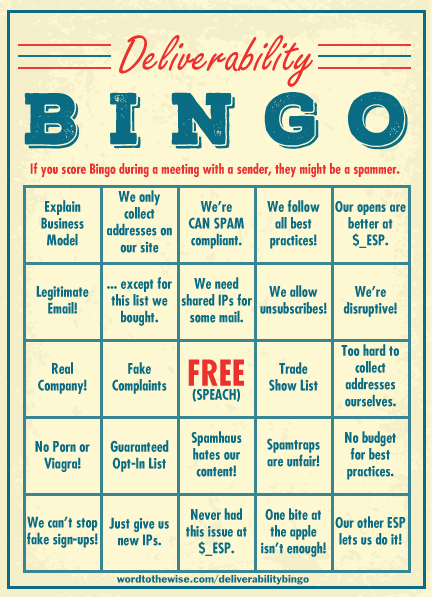Searching for a new ESP?
250OK has compiled advice about what buyers should ask when looking at new ESPs. The advice from various folks is spot on.
Changing ESPs is a big undertaking, bigger than most people expect. It’s not like changing vendors for other services. It is a process and most of the time moving creates a short term dip in deliverability. I have a lot of theories and speculation as to why, but the evidence is pretty clear. I think Mike Hillyer summed it up best: “I think the most commonly missed question is ‘will changing ESPs truly affect the outcomes we are looking to change?’”
I also liked the answers to the question about using multiple ESPs. My view is that unless there are specific requirements for different mail streams the answer is no, don’t do it. And don’t think you can keep a “backup” ESP with “partially warmed IPs” and be able to turn it on as disaster recovery. Email doesn’t work that way.
It’s an article well worth a read.
